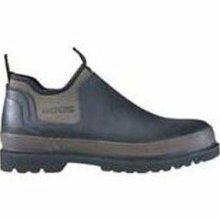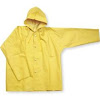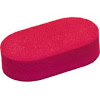|
What's the one thing all automobiles have in common?
They all need tires if they're going to get around. Tires are one of those parts people tend to take for granted, but they're one of the most vital parts of any vehicle. This is where the importance of rubber comes into play in auto manufacturing. Automotive manufacturing is the driving force of the rubber industry, as about 75 percent of the world's natural rubber production is used to make tires for vehicles The rubber tire protects the rest of the wheel and its internal parts from wearing down, which can be good for fuel mileage and road safety. In addition to the all-important tires, parts such as wiper blades, engine mounts, seals, hoses and belts are also made from rubber. As with plastic, it's a very durable, cheap and flexible material that has a wide array of uses in automobiles. |
| Typical Properties of Common Rubber Compounds |
| Properties and Uses of Rubber |
Aircraft tyres For Tires 

|
  Rubber Boot |
Rubber Tires
|
Rubber Raincoats 
|
Rubber Sponge 
|
Rubber Bowling Ball 
|
Rubber pillows 
|
Rubber electrical insulation 


|
Rubber erasers 
|
|
Rubber Heels Rubber Soles 
|
Rubber Shoes 
|
|
Rubber grommets Rubber grommets are used to protect or cover through holes. They help eliminate sharp edges so your wires are protected and add aesthetic value to your application. |
|
Suction Cups Suction Cups are a great product for automatic material handling applications. They come in a variety of sizes, with and without threaded screws or inserts. |
|
Crutch Tips These standard tips are used for protecting the ends of your products from wear and tear. Used on metal, wood, or fiberglass and designed to fit snuggly and hold in place. |
| Rubber toys, balls, rafts, elastic bandages, adhesives, paints, hoses, and a multitude of other products. |
| Most tires contain several kinds of rubber, both natural and synthetic. Radial automobile tires contain a greater percentage of natural rubber than other types of automobile tires because radial tires have flexible sidewalls that tend to produce a buildup of heat, to which natural rubber has a superior resistance. |
| Tubeless Tyres |
|
How are tyres made? In order to give you a better understanding of how tyres are made, we have provided a guide to some of the different components that go into making a tyre. A vehicle's tyres are the main point of contact between the vehicle and the road, they are the only form of grip and ensure the driver's safety. The tyres used should meet the full requirements for the vehicle and should therefore provide great performance, as well as being hard wearing and robust. Good tyre maintenance is essential in order to ensure your vehicle's safety, control and maneuverability. There are as many as 200 different components that have to be carefully combined to construct a tyre. The rubber compound or the "makeup" of the tyre is designed to grip the road, it can cope with high temperatures caused by friction and should be highly resistant to general wear and tear. The tyre treads are the grooved outer layer of the tyre that come into direct contact with the road surface. The grooves and sipes upon the tyre are designed to channel water away from the tyres surface in order to maintain maximum grip on the road's surface, even in wet conditions. |
|
Who discovered rubber?
What discovery marked the
beginning of modern rubber technology?
THE TWO TYPES OF RUBBER
Where is natural rubber produced?
What accelerated the development
of synthetic rubber?
How is synthetic rubber produced?
Does the industry utilize
more natural or synthetic rubber in its manufacturing process?
How many chemical types of
rubber are there?
TIRES |
